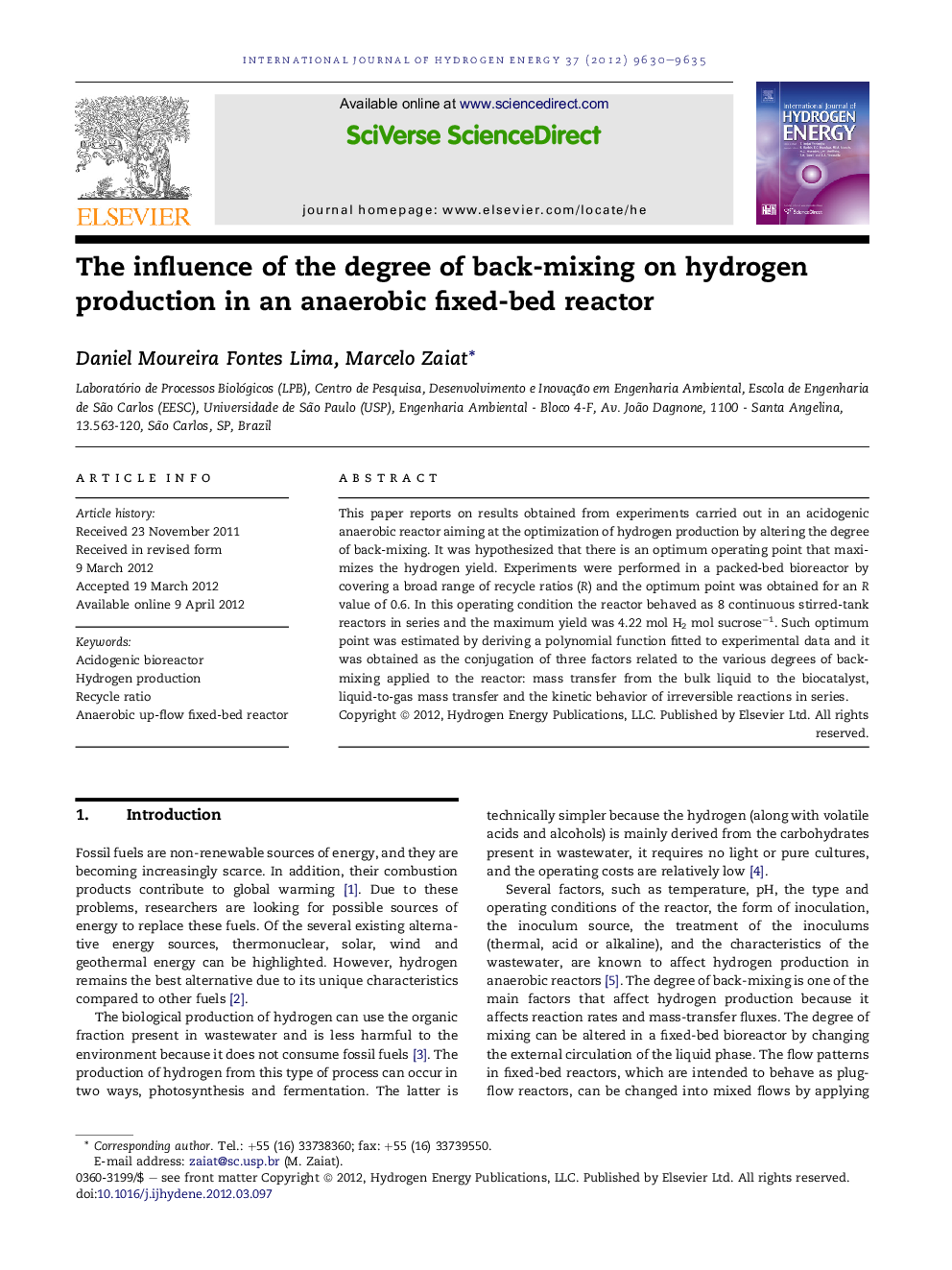| Article ID | Journal | Published Year | Pages | File Type |
|---|---|---|---|---|
| 1271276 | International Journal of Hydrogen Energy | 2012 | 6 Pages |
This paper reports on results obtained from experiments carried out in an acidogenic anaerobic reactor aiming at the optimization of hydrogen production by altering the degree of back-mixing. It was hypothesized that there is an optimum operating point that maximizes the hydrogen yield. Experiments were performed in a packed-bed bioreactor by covering a broad range of recycle ratios (R) and the optimum point was obtained for an R value of 0.6. In this operating condition the reactor behaved as 8 continuous stirred-tank reactors in series and the maximum yield was 4.22 mol H2 mol sucrose−1. Such optimum point was estimated by deriving a polynomial function fitted to experimental data and it was obtained as the conjugation of three factors related to the various degrees of back-mixing applied to the reactor: mass transfer from the bulk liquid to the biocatalyst, liquid-to-gas mass transfer and the kinetic behavior of irreversible reactions in series.
► The degree of back-mixing influenced H2 production in an anaerobic packed-bed bioreactor. ► An optimum point for liquid recycle ratio of 0.6 was obtained as result of mass transfer and kinetic effects. ► Recycle ratio equal to 0.6 resulted in 4.22 mol H2 mol−1 sucrose and 128.13 mL H2 h−1 L−1. ► Main intermediate products were acetic acid, ethanol and butyric acid, in this order. ► Unstable H2 production was probably caused by homoacetogenic microorganisms.
